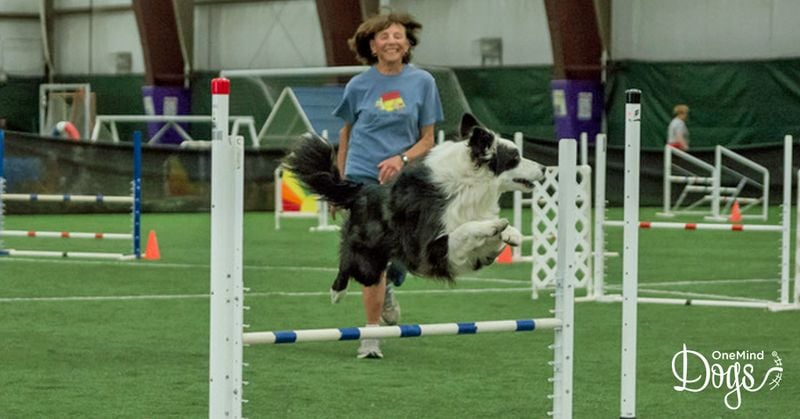8 Fascinating Dog Traits That Still Blow a 20-Year Expert’s Mind
Dogs have been our companions for thousands of years, yet they continue to surprise even the most experienced canine experts. After two decades of working with dogs, this expert is still amazed by their incredible abilities and behaviors.
These remarkable animals possess traits that defy simple explanation and showcase just how special the bond between humans and dogs truly is.
1. Their Emotional Intelligence Goes Beyond Words

Dogs read our emotions better than some humans do. They notice subtle changes in our facial expressions, body language, and even detect shifts in our scent when we’re feeling sad, happy, or afraid.
Research shows they process emotional information in brain regions similar to humans. A dog will often approach when you’re crying, lean against you when you’re anxious, or celebrate alongside you during happy moments.
This emotional radar works across species boundaries, allowing them to form deep connections not just with us, but sometimes with cats, horses, and other animals too. Their empathy doesn’t require language—it’s pure, instinctual understanding.
2. Every Dog Has a Unique “Voice” Pattern
Scientists have discovered that each dog possesses a distinct vocal signature, much like human fingerprints. The pitch, duration, and frequency patterns in their barks, whines, and howls are completely individual.
Long-time dog owners often report they can identify their pet’s bark among many others at the dog park. This uniqueness extends beyond barking—even the way they grumble, sigh, or make those funny morning stretching sounds follows patterns specific to each dog.
What’s fascinating is how dogs adapt their vocalizations for different humans. Your dog might use entirely different sounds with you than with other family members!
3. They Never Stop Learning New Tricks
Forget that old saying about teaching old dogs new tricks! Dogs maintain remarkable cognitive flexibility throughout their lives. A 14-year-old dog can learn commands just as effectively as a young puppy, though they might need different teaching approaches.
Their brains continuously form new neural connections, allowing them to adapt to changing environments and expectations. This explains why senior shelter dogs can thrive in new homes and adjust to entirely different routines.
The most remarkable part? Unlike humans who often become set in their ways, dogs maintain childlike openness to new experiences. Their willingness to learn reflects an evolutionary adaptation that helped them become our most successful animal partners.
4. Dogs Live Entirely in the Present Moment
While humans worry about tomorrow or dwell on yesterday, dogs exist in a perpetual now. This mindfulness isn’t something they practice—it’s their natural state of being. Watch a dog after scolding; within minutes, they’ve moved on completely, without harboring resentment.
Their present-focused minds explain why they greet you with unbridled joy whether you’ve been gone for five minutes or five days. Time perception works differently in the canine brain, with each reunion feeling fresh and exciting.
This trait offers us a profound lesson. Dogs don’t waste energy on regrets or anxiety about the future—they simply experience life as it unfolds, finding joy in ordinary moments we often overlook.
5. Their Capacity for Forgiveness Knows No Bounds
Rescue workers regularly witness dogs who’ve suffered terrible abuse transform into loving companions within weeks. Their ability to forgive and trust again defies logical explanation.
Dogs rescued from fighting rings have become therapy animals, bringing comfort to others despite their traumatic pasts. Unlike humans who might carry emotional scars for decades, dogs seem capable of psychological healing that neuroscientists still can’t fully explain.
Perhaps most humbling is how they forgive our daily mistakes—the missed walks, the times we’re too busy, the accidental steps on tails. They meet our imperfections with unwavering acceptance, modeling a kind of forgiveness many humans struggle to achieve in a lifetime.
6. Ancient Instincts Still Drive Modern Behavior
Have you noticed your pampered poodle turning in circles before lying down? That’s a 15,000-year-old instinct to flatten grass and check for snakes! These deeply embedded behaviors persist despite generations of domestication.
The way dogs bury toys mimics how their ancestors preserved extra food. Even their play styles—the bow, the chase, the gentle mouthing—mirror hunting and survival techniques that once kept their wild predecessors alive.
Most fascinating is how these instincts surface in specific situations. A normally docile family pet might suddenly display herding behaviors with running children or show surprising protective instincts during perceived threats, revealing glimpses of the wolf that still lives within.
7. They Form Complex Social Relationships Beyond Humans
Dogs create sophisticated friendship networks that would impress any social psychologist. They remember hundreds of individual dogs they’ve met, forming genuine preferences, alliances, and yes—sometimes lifelong grudges against that one poodle from the dog park.
Research shows they recognize and respond differently to specific dogs even after years of separation. Their social memory rivals primates, allowing them to maintain complex pack dynamics even in domestic settings.
What’s truly remarkable is how they navigate different relationship rules with various species. A dog might be gentle with the family cat, playful with certain dog friends, cautious around horses, and protective toward human children—showing an adaptable social intelligence that few animals possess.
8. Their Devotion Defies Scientific Explanation
Stories of dogs waiting years at train stations for deceased owners or traveling hundreds of miles to reunite with their families aren’t just heartwarming anecdotes—they’re documented throughout history. This level of loyalty transcends simple attachment theory.
Dogs have been known to risk their lives protecting their humans without hesitation. They’ll stand between their owners and perceived threats, regardless of size disadvantage or personal danger.
The biochemistry behind this bond involves oxytocin—the same hormone responsible for mother-child bonding—but scientists admit this doesn’t fully explain the depth of canine devotion. After 20 years studying dogs, this expert believes their capacity for selfless love represents something science has yet to fully understand.













